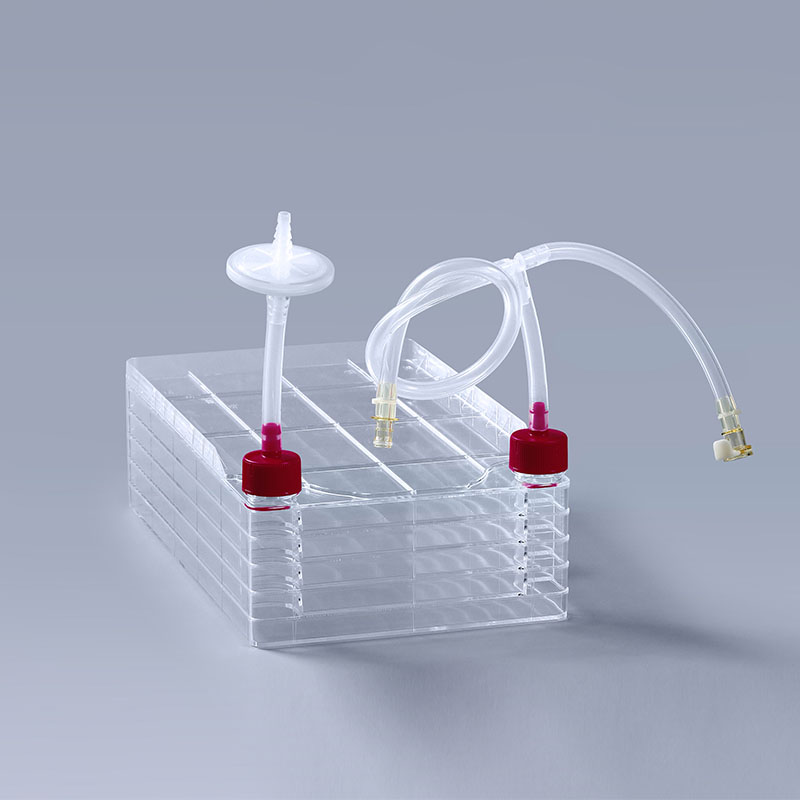High-throughput screening: Cell factories enable large-scale cell culture and high-throughput screening of drugs. Researchers can quickly identify bioactive candidate drugs, accelerating the drug discovery and development process.
Simulation of in vivo environments: They can simulate in vivo conditions, providing cell growth conditions that closely mimic real physiological conditions. This helps in evaluating the efficacy and safety of drugs, providing stronger support for clinical trials.

Reproducibility: Cell factories exhibit high reproducibility, making experimental results more reliable. Researchers can replicate the same experiments under different conditions to verify the stability and reliability of results.
Time and resource savings: Researchers can obtain large quantities of cell samples in a shorter period, speeding up studies in pharmacokinetics and pharmacodynamics of drugs. Additionally, this method can reduce the use of experimental animals and ethical concerns.
In conclusion, Cell factories offer numerous advantages in research and drug development. In practical applications, it is essential to weigh the pros and cons based on specific circumstances, selecting the most suitable research methods and technological pathways. Furthermore, continuous enhancement and innovation in biotechnology are necessary to improve the effectiveness and reliability of its applications.
The FAI climbed 5.9 percent year-on-year in the first 11 months of 2018, quickening from the 5.7-percent growth in Jan-Oct, the National Bureau of Statistics (NBS) said Friday in an online statement.
The key indicator of investment, dubbed a major growth driver, hit the bottom in August and has since started to rebound steadily.
In the face of emerging economic challenges home and abroad, China has stepped up efforts to stabilize investment, in particular rolling out measures to motivate private investors and channel funds into infrastructure.
Friday's data showed private investment, accounting for more than 60 percent of the total FAI, expanded by a brisk 8.7 percent.
NBS spokesperson Mao Shengyong said funds into weak economic links registered rapid increases as investment in environmental protection and agriculture jumped 42 percent and 12.5 percent respectively, much faster than the average.
In breakdown, investment in high-tech and equipment manufacturing remained vigorous with 16.1-percent and 11.6-percent increases respectively in the first 11 months. Infrastructure investment gained 3.7 percent, staying flat. Investment in property development rose 9.7 percent, also unchanged.
 English
English


















































